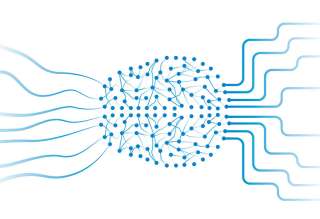SPS Feed
Top Reasons to Join SPS Today!
1. IEEE Signal Processing Magazine
2. Signal Processing Digital Library*
3. Inside Signal Processing Newsletter
4. SPS Resource Center
5. Career advancement & recognition
6. Discounts on conferences and publications
7. Professional networking
8. Communities for students, young professionals, and women
9. Volunteer opportunities
10. Coming soon! PDH/CEU credits
Click here to learn more.
The Latest News, Articles, and Events in Signal Processing
Date: 19-21 December 2025
Location: Paris, France
Date: 26 September 2024
Time: 11:00 AM ET (New York time)
Presenter(s): Dr. Iole Moccagatta
Date: 23 December 2024
Chapter: Thailand Chapter
Chapter Chair: Krittika Kantawong
Title: Signal Processing and Deep Learning for Practical Active Noise Control
Date: 28 August 2024
Time: 10:00 AM ET (New York Time)
Presenter(s): Dr. Waheed U. Bajwa
Date: 26 July 2024
Time: 1:00 PM ET (New York Time)
Presenter(s): Dr. Archana Venkataraman
Date: 21-24 September 2025
Location: Beijing, China
Date: 2 December 2024
Chapter: Hong Kong Chapter
Chapter Chair: Yik Chung Wu
Title: Harnessing the Power of Deep Learning for Urban Sound Sensing and Noise Mitigation
Inspired by the capabilities of transformer models, we introduce a novel method named Multivariate Time-Series Imputation with Transformers (MTSIT). This entails an unsupervised autoencoder model featuring a transformer encoder, leveraging unlabeled observed data for simultaneous reconstruction and imputation of multivariate time-series.

Applications are invited for postdoctoral researcher positions in the general area of optimization and learning of network systems. Competitive financial supports will be provided.
Candidates with a clear interest in the general area of network systems are encouraged to apply.
Specific areas of research include:
Date: 11 November 2024
Chapter: Croatia Chapter
Chapter Chair: Tomislav Petkovic
Title: Deep Generative AI
Date: 6 August 2024
Time: 1:00 PM ET (New York Time)
Presenter(s): Dr. Shinji Watanabe, Dr. Abdelrahman Mohamed
Dr. Karen Livescu, Dr. Hung-yi Lee, Dr. Tara Sainath,
Dr. Katrin Kirchhoff & Dr. Shang-Wen Li
Pages
SPS Social Media
- IEEE SPS Facebook Page https://www.facebook.com/ieeeSPS
- IEEE SPS X Page https://x.com/IEEEsps
- IEEE SPS Instagram Page https://www.instagram.com/ieeesps/?hl=en
- IEEE SPS LinkedIn Page https://www.linkedin.com/company/ieeesps/
- IEEE SPS YouTube Channel https://www.youtube.com/ieeeSPS























